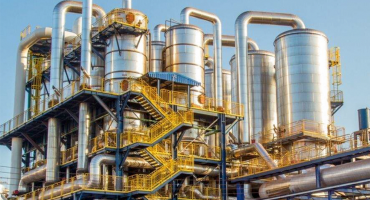
Biomass is one of the fastest-growing sources of fuel in the world. Biomass fuel or biofuel is derived from organic matter like plants or animals. One of the most important factors of biomass fuel is that it is carbon neutral as the carbon dioxide is extracted from the organism during its life cycle. It results in preventing the additional release of carbon dioxide during combustion. For instance, trees require carbon dioxide for photosynthesis, leading to the absorption of carbon dioxide from the atmosphere. While burning wood, the carbon dioxide is released back into the environment while the oxygen is extracted for the burning process. Therefore, biomass fuel does not cause any environmental loss and is an ideal renewable energy source. Similar to biomass, biogas is a renewable source of energy.
There are various ways to obtain biomass fuel of natural energy. It is noteworthy that the industries using wood as fuel do not usually cut the entire tree but use waste products such as rotten wood, branches, or leaves. These waste products are crushed and transported to biomass power plants. Biomass is also produced by growing it specifically for fuel purposes.
How is energy produced using biomass?
The biomass fuel is burned to convert water to steam, used further for heating in process plants or to produce electricity. Biomass is either burned directly or can be converted to biogas or biofuel like ethanol and biodiesel that are burned for energy. Biodiesel is usually used in vehicles and is derived from vegetable oil and animal fats.
Biomass pellets are a popular biofuel produced by compressed organic matter. Due to its smaller size, it is easy to transport and can be fed automatically to the burner. The high density and low moisture content in the biomass pellet result in effective and complete combustion.
On the other hand, biogas is produced from the same organic matter as biomass. However, unlike biomass, biogas results from fermentation, produced during a multi-stage process of anaerobic micro-bacterial degradation of organic substances, also known as anaerobic digestion. The process takes place in special containers called digesters that lack oxygen, thereby producing gas as a result.
The gasses produced are CO2 (35%) and a significant amount of harmful greenhouse gasses like Methane (65%). However, it is not passed into the atmosphere as it is burned in a digester to produce energy. After the required processing, biogas is an ideal alternative for natural gas. The digested material is used later for compost.
Facts on Biomass Fuel:
Biomass is a vital fuel to replace with coal, as well as to promote the local economy. Here are some of the facts on renewable and sustainable biomass fuel.
- Biomass fuel used for power and heat generation replaces coal, natural gas, and other fossil fuels, maintaining carbon neutrality. Due to this, the high demand for wood results in the growth of more trees, absorbing even more carbon.
- Forests provide carbon storage for the long-term with various valuable products, and fuel for heat and power generation that reduces the spread of wildfires.
- Wood-based biomass decreases wildfire risk by using fallen or dead trees that may cause wildfires.
- Wood biomass converted to pellets by drying low-value wood is ideal in replacing high-polluting coal at existing energy and heat facilities.
- Strong demand for forest products such as the additional value of selling low-value wood for biomass is an important reason to grow forests. Higher demand for forest products entices in maintaining and investing in forest productivity to increase supply, resulting in more growth of forests.
- Since biomass is locally produced, harvested, and processed, it provides an economic boost in rural areas.
- About 32% of the total primary energy use in India is derived from biomass with more than 70% of the population depending on it for its energy needs.
- Primary biomass materials used for power generation include bagasse, rice husk, straw, cotton stalk, coconut shells, soya husk, de-oiled cakes, coffee waste, jute wastes, groundnut shells, sawdust, etc.
- Around 450-500 liters of biogas are produced from 1 kilogram of organic material. The residue after decomposition is a good fertilizer or manure.
- India has targeted 175 GW of alternative energy by 2022
Biomass in India:
India has ample biomass reserves, estimated to be around 500 million metric tons per year, with over 120 to 150 million metric tons used for energy production. The government of India plans to generate 50000 MW of electricity from biomass. Advancement in biomass energy production in India will help both rural and urban areas with social and economic benefits. Biomass is also a cost-effective and ecologically friendly energy source, ensuring more conventional techniques of production as well as an efficient and sustainable method of manufacturing. The demand for biomass energy is expected to increase by 2025. Due to population growth, increased industrial use, and technological advancements improving biomass fuel or the conversion of biomass fuel into effective energy carriers, it is predicted that the demand for biomass energy would significantly increase by 2025.
Rakhoh’s Biomass Boilers:
Rakhoh Boilers has been a leading boiler manufacturer since its inception in 1983. We manufacture efficient and reliable industrial boilers that ensure effective combustion with biomass fuel. Our biomass-fired boilers include Solid-fuel Bi-Drum, Combo X, Membrane X, Optipac, and Huskon.
For more details on our products and services, visit www.rakhoh.com








